In the heart of Munich lies a hidden gem waiting to be discovered by families seeking adventure, education, and quality time together, we are referring to the Botanical Gardens. These gardens offer a wealth of experiences that make them an ideal destination for families looking to connect with nature and each other. This is a green paradise in Munich.
Some facts
Munich’s first botanical gardens were created back in 1812 and were originally located between Stachus Square and the central station, a park that is now known as the Alter Botanischer Garten (the “old botanical gardens”).
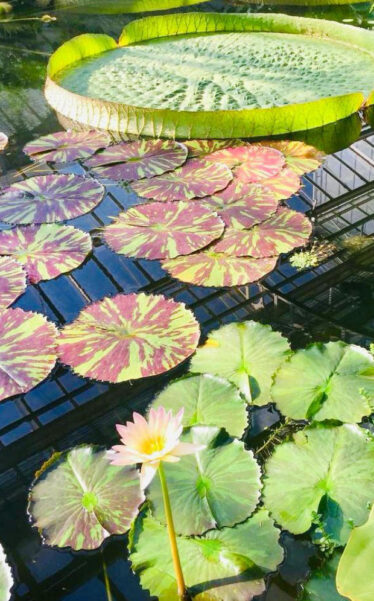
However, it soon became too cramped in the city center and the air pollution became too strong. So, a new green lung needed to be created over a larger space.
The new Botanical Garden, considerably larger at 21.20 hectares, was laid out in Nymphenburg on May 10th, 1914.
The garden consists of a central section in neo-baroque style as well as an Alpinum with a pond in front and a large arboretum. An a mazing faxct is that a small structure in the center of the garden, has served as a café since 1936.
Afterwards, between 1908 and 1913, the institute building was built. It had a cost of around 5 million marks. Impresivele enough, it survived World War II.
Despite the turmoil of war, the staff remained steadfast in their commitment to protecting and preserving the garden’s valuable assets. As air raids became more frequent, protective measures were put in place to safeguard the garden’s greenhouses and collections from damage. Underground shelters were constructed to provide refuge for staff and visitors during bombing raids, ensuring their safety amidst the chaos of war.
The garden’s infrastructure suffered damage from bombing raids, and many plants were lost due to shortages of water, fuel, and other essential resources.
The Botanical Garden remained as a beacon of hope and resilience in a city torn apart by conflict. Despite the hardships of war, the garden continued to serve as a place of solace and inspiration for the people of Munich, offering a glimpse of beauty and tranquility amidst the chaos and destruction of war.
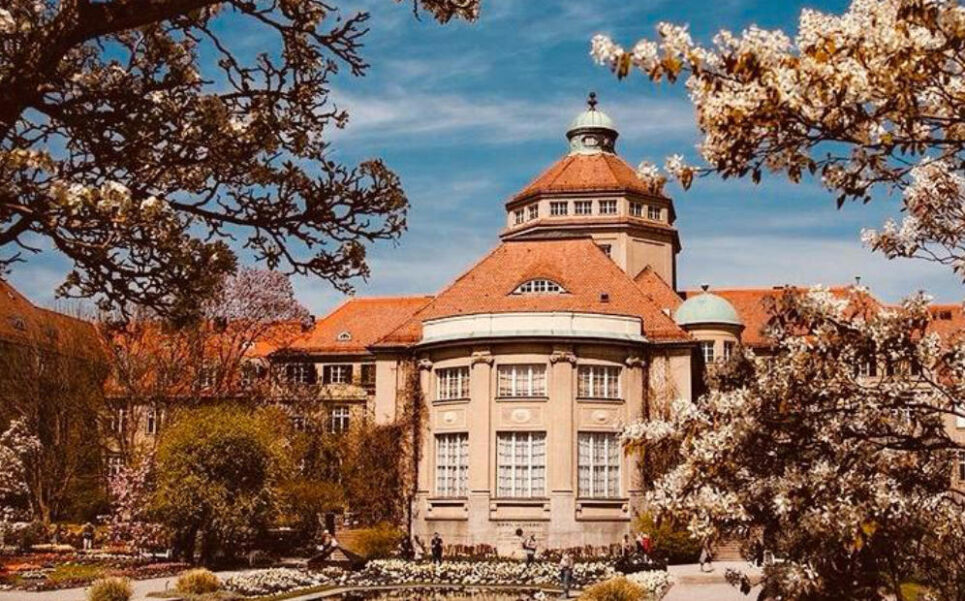
To this day, the institute building houses collections of dried plants – the herbaria – of the Bavarian State and the Ludwig Maximilian University. With around three million specimens, including about one million fungi, lichens, algae and mosses, it is one of the largest and scientifically most important plant collections in the world.
For exhibitions and events in summer, the garden uses its 390-square-meter wintering hall from 1912. The “Winter Hall” was historically renovated in 2005 and continues to fulfill its original purpose in winter, namely to house the Mediterranean woody plants and palms kept in tubs.
What is houses
Spanning over 22 hectares, these gardens are a verdant paradise, offering visitors a captivating journey through a diverse array of plant life from around the world. The botanical garden stretches over 21 hectares and is home to around 14,000 different species of plants.
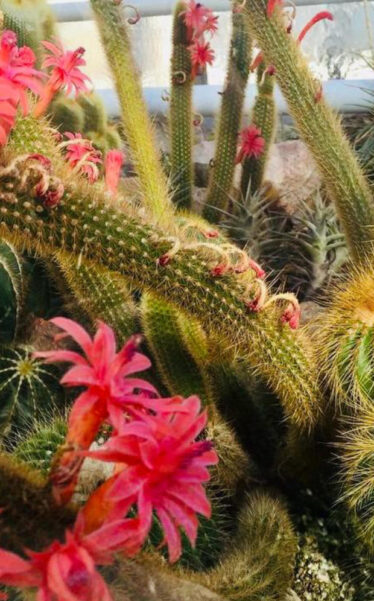
The garden cultivates about 19,600 species and subspecies on an area of 21 hectares (52 acres). Its mission is to provide a beautiful and restful environment as well as educate the public about plants and nature more broadly.
Major collections include an alpine garden, an arboretum, rose collections, and a so-called “systematic garden” in which plants are arranged by taxonomic families.
As you step through the gates of the Botanical Gardens, you are greeted by a kaleidoscope of colors and fragrances that immediately transport you to another world.
The gardens are meticulously curated to showcase a wide variety of plant species, arranged in themed sections that highlight different geographic regions and ecosystems.
From towering palm trees swaying gently in the breeze to delicate orchids clinging to the branches of ancient trees, the diversity of flora on display is truly awe-inspiring.
Wander along winding pathways that meander through lush greenery, pausing to admire the intricate beauty of each plant and marvel at the wonders of the natural world.
The garden also contains an extensive greenhouse complex (4,500 m2 total area in 11 greenhouses), including greenhouses dedicated to bromeliads and aroids Araceae, cacti and succulents, cycads, ferns, orchids, and Mexican plants. The orchid collection includes over 2,700 species from 270 genera, as well as hybrids, with special collections of Catasetinae, Cattleya (unifoliates), Cymbidium, Dendrobium, Dracula, Paphiopedilum, Phragmipedium, Pleione, Stanhopeinae, Vanda, and Zygopetalinae.
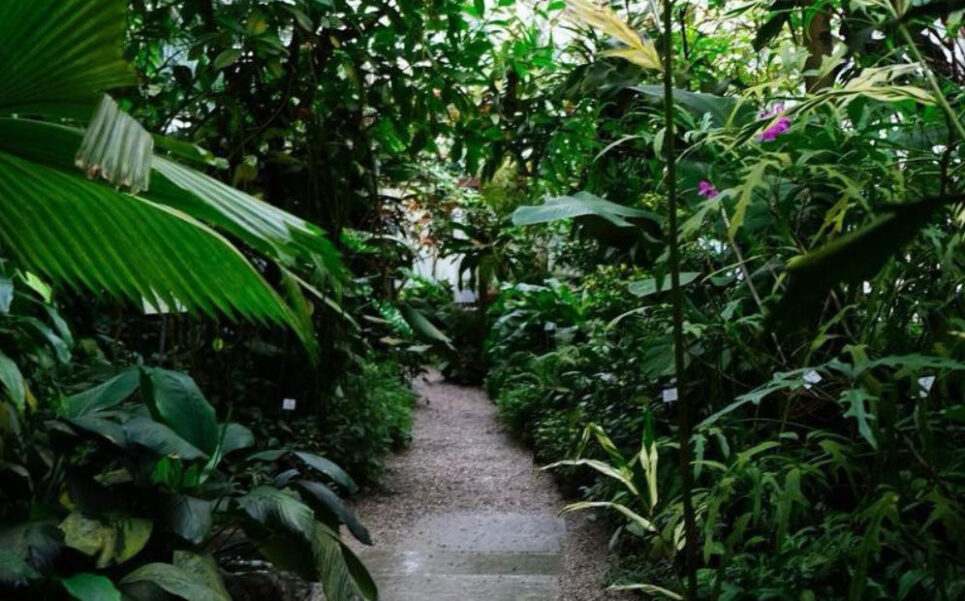
The garden also maintains an external station, the Alpengarten auf dem Schachen, at an altitude of 1,860 m.
The professors of systematic botany and mycology of the LMU and their colleagues also work in this institute building. During the semester months, classes are held there in modern practical rooms and laboratories.
Exploring the gardens
One of the highlights of any visit to the Botanical Gardens is the opportunity to explore its themed gardens, each offering a unique botanical experience.
Three large halls, one behind the other in a west-east direction, are followed by smaller specialized glasshouses.
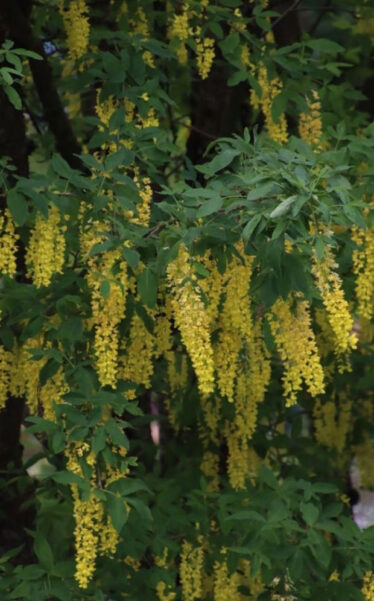
In the Alpine Gardens there are rugged mountain landscapes. Here, towering peaks, cascading waterfalls, and meandering streams create a picturesque backdrop for a diverse collection of alpine plants native to the region.
The Mediterrenean Garden offers vibrant colors, adorned with sun-loving species from southern Europe and beyond. A place where aromatic herbs, vibrant flowers, and ancient olive trees evoke the sights and scents of southern Europe.
The Tropical Greenhouses are a must-visit. A humid jungle environment teeming with tropical plants. There are steamy jungles, towering palms, and exotic orchids transport visitors to the humid rainforests of the tropics.
The Africa and Madagascar House is found at Hall C. Th Small Succulent House (House 5) has succulent spurges (Euphorbiaceae) that store water in their stems. Aloes can also be seen here in great variety. Some tower up like trees, others remain stemless and form basal rosettes. On the west side, botanical treasures are displayed behind glass, such as the primitive Welwitschia mirabilis, the “Living Stones” (Lithops and other genera) and rare Aloe species.
Entering the last side house on the south side, one changes continents into the Mexico House (House 6). This house has impressive canyon-like landscape, visitors will find columnar and ball cacti inside as well as many agaves. This house was donated in 1958 by the Society of Friends of the Botanical Garden e.V. for the succulent plants.
Stepping into the tree fern house (house 10) is like stepping into a magical forest. Originating from a distant past, tree ferns grow here on dark brown-red lava soil and mossy lava rock.
The Bromeliad and Araceae House (House 8). It is devoted to bromeliads, almost all of which are native to the Americas, Araceae, which are common worldwide but mainly tropical, and other tropical herbs such as Marantaceae, which are striking for their leaf coloration. A small stream brings additional life to the warm and humid tropical world.
House 9 is the Cyad House. This is the greenhouse complex that has been least altered in its construction since the showhouses were built.
An interesting fact is that Cycads are also called living fossils. However, their German name “Palmfarne” is rather misleading. They are neither ferns nor palms, which they resemble only in growth habit and partly similar leaf shape.
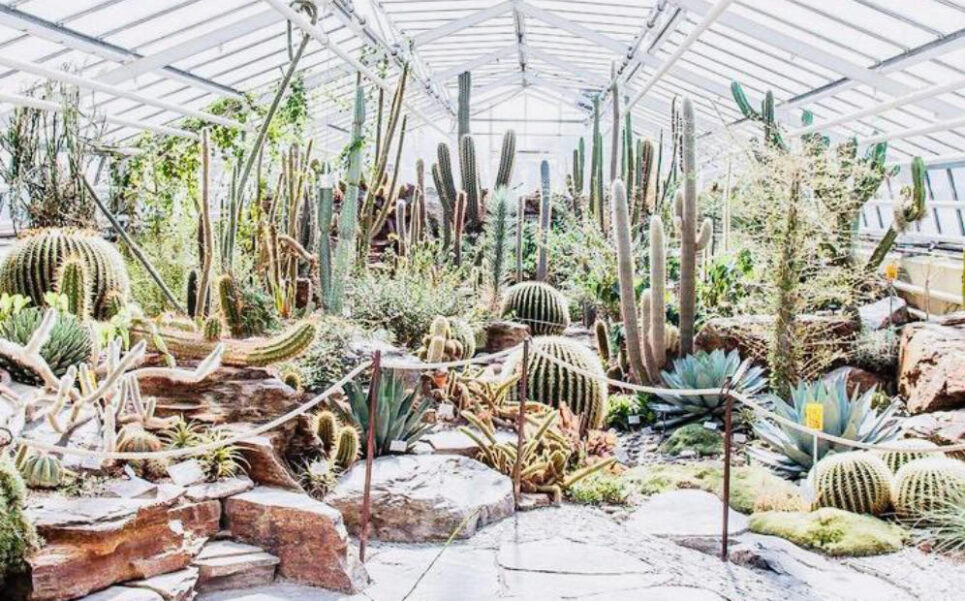
The Large Cactus House is in hall A. The plants that thrive in low rainfall areas such as deserts, semi-deserts, dry rocky areas and grasslands are called xerophytes. These have developed various methods to survive long periods of drought.
Temperature House is very interesting. In the summer months, the focus is on the genus Fuchsia, of which some very interesting wild species are shown, as well numerous hybrids and selections. In winter, numerous potted plants from milder climates find a temporary shelter here and delight from December onwards with their first and increasingly abundant blooms.
The Orchid House is simply loverly. Orchids are variety of tropical plants are cultivated in it in a warm and humid atmosphere, each complemented by flowering specimens from the Botanical Garden’s rich orchid collection.
In the Tropical House of Crops visitors can see tropical useful and aromatic plants as well as plants that were and are used for medicinal and ritual purposes, as hunting poisons or for the extraction of industrial raw materials. Two large central beds house mainly tall, mostly arboreal useful plants cultivated in plantations, such as banana, cacao and papaya.
An interesting fact (at least to us) is that bananas were brought to Germany at the end of the 19th century and, like palm trees, were considered synonymous with the tropics and exoticism.
The tropical swamp and aquatic plant show house has warm-temperature aquatic plants and exotic fish.
Educational and inspirational
In addition to its aesthetic appeal, the Botanical Gardens serve as a valuable educational resource for visitors of all ages. Interpretive signage and interactive exhibits provide fascinating insights into plant biology, ecology, and conservation. Guided tours and educational programs offer visitors the opportunity to learn from knowledgeable experts and deepen their understanding of the natural world.
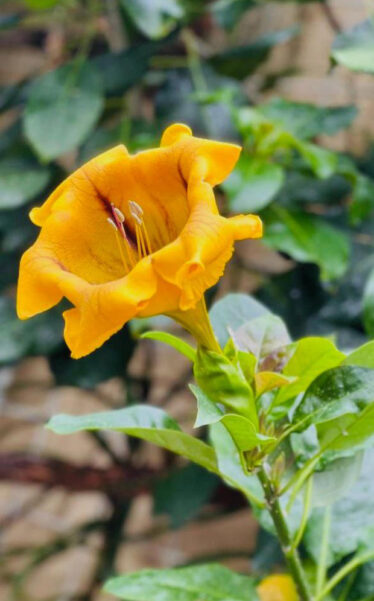
For budding botanists and garden enthusiasts, the gardens also serve as a source of inspiration and ideas for their own green spaces. Whether you’re seeking to cultivate a tropical paradise in your backyard or create a tranquil Zen garden, the Botanical Gardens provide a wealth of inspiration to fuel your gardening dreams.
For children, the Botanical Gardens are like a living encyclopedia of the natural world, brimming with plants from every corner of the globe.
From towering trees to delicate flowers, the gardens offer a feast for the senses and an opportunity for children to explore the wonders of biodiversity up close.
It is a natural playground where children can run, jump, and explore to their heart’s content. With sprawling lawns, winding pathways, and hidden nooks waiting to be discovered, the gardens provide endless opportunities for outdoor adventure and imaginative play.
Whether they’re chasing butterflies, playing hide-and-seek among the trees, or picnicking on the grass, children can unleash their creativity and energy in a safe and stimulating environment.
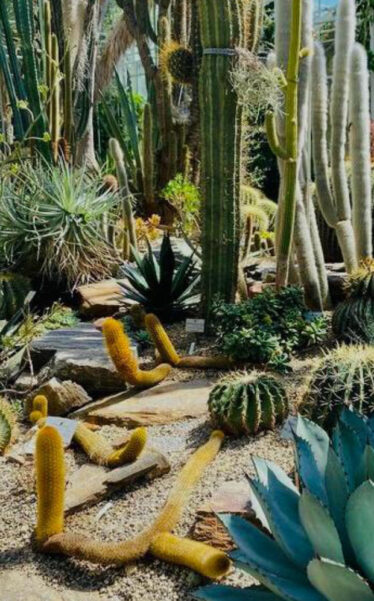
As they wander through themed gardens representing different ecosystems and regions, children can learn about the diverse habitats that support plant life and the importance of conservation in preserving these precious environments.
The Botanical Gardens in Munich have played a vital role in advancing our understanding of plant biology, ecology, and conservation.
The gardens serve as a research hub for botanists and scientists, conducting studies on plant genetics, medicinal properties, and ecosystem dynamics.
In addition to its scientific contributions, the Botanical Gardens are actively involved in conservation efforts to protect endangered plant species and preserve biodiversity.
Through seed banks, plant propagation programs, and partnerships with conservation organizations, the gardens are working to safeguard the future of plant life for generations to come.
At the Botanical Gardens, learning extends beyond the classroom and into the great outdoors. Interactive exhibits, interpretive signage, and educational programs provide children with opportunities to engage with plant science in a fun and hands-on way.
Whether they’re dissecting flowers to learn about plant anatomy, participating in a guided nature walk, or attending a workshop on gardening, children are encouraged to ask questions, make observations, and discover the fascinating world of plants at their own pace.
Conclusion
Consequently, a visit to the Botanical Gardens in Munich is not just a leisurely stroll through a garden—it’s a journey of discovery, a feast for the senses, and a celebration of the extraordinary diversity of plant life that graces our planet.
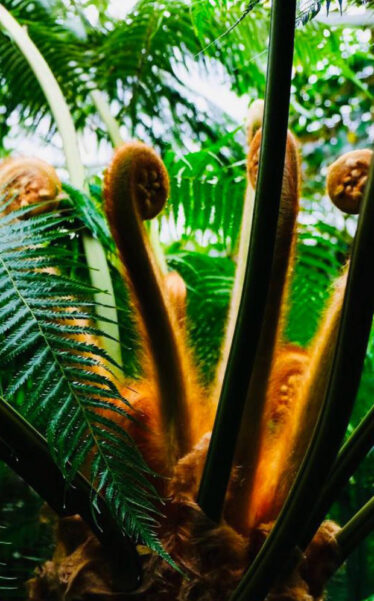
Here, children explore the wonders of nature they are not only learning about the natural world around them but also gaining a deeper appreciation for the importance of conservation and stewardship.
Whether you’re a seasoned botanist or simply a nature lover looking for a moment of serenity amidst the urban chaos, the Botanical Gardens offer a welcome respite and an opportunity to reconnect with the beauty of the natural world.
The scent that fills the gardens when the roses are in bloom is particularly captivating. The sound of insects humming and birds singing fills the air as frogs and toads splash in the ponds between the water lilies and lily pads. Inside the greenhouses, palm trees, orchids, cacti and bright butterflies give visitors the chance to enjoy a moment of summer, even in the depths of winter.


